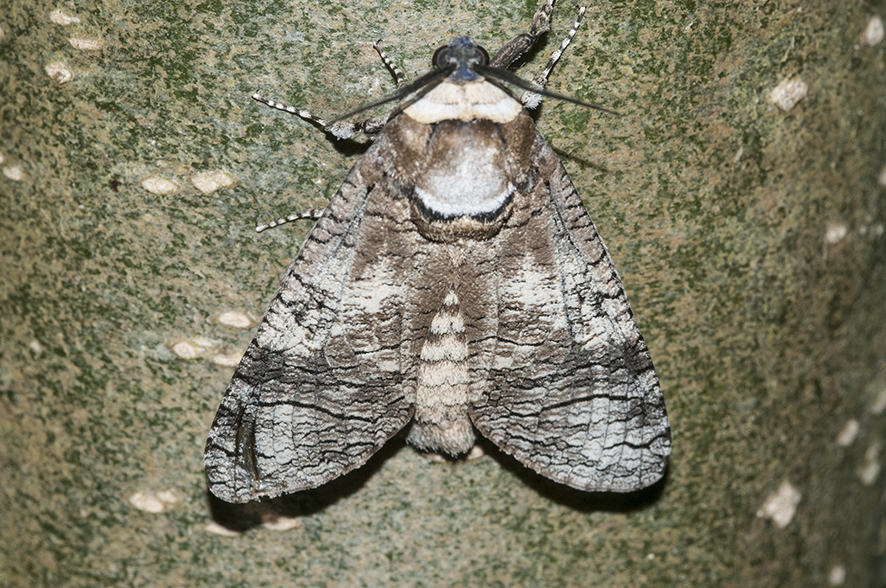
The Bourne Conservation Group is continuing to collect and share responses to the Garden Watch survey reported last month. BCG’s expert on biodiversity Dr Martin Angel undertakes his own surveys and on Monday 8th June recorded an exceptional sighting in the Middle Bourne Lane Community Garden. He caught three goat moths (pictured) in a single night.
The goat moth is Britain’s heaviest moth and although it is widespread it is far from common. It is designated a high priority species in the UK’s Biodiversity Action Plan. The adult moth does not feed, but usually seeks out damaged oak and willow trees on which lays its eggs, and Infestations can eventually kill the tree. The caterpillars when they hatch, burrow through the bark into the tree’s heartwood and feed there, taking up to five years to mature. Fermented sap, smelling of goat, often seeps from the burrows and attracts other insect such as red admiral butterflies and hornets. In late summer, the 10cm long mature caterpillars leave the tree and may be encountered crawling around seeking a pupation site. They are richly coloured red-brown with yellow flanks. The adult moths emerge the following year in mid-summer and then only live for a few days. Hence catching a single goat moth is unusual but catching three in one night is exceptional.
The garden watch bird survey has been running since before Easter; the butterfly and vertebrate surveys were started a fortnight later. The bird survey has had 26 responds, reporting sightings (or hearings) of 35 species. The most frequently reported species were the garden favourites (or not so
favourite) blackbirds, robins, blue and great tits and dunnocks. There were four sightings of red kites, a pair of mallard in one garden, one stock dove and a blackcap. Young fledglings of several species have been seen in the garden with blackbirds, robins, dunnocks and blue tits producing broods already.
There were only four reports of butterflies, probably because the recent deterioration of the weather has not been conducive to butterfly activity. Earlier there were surprising numbers of holly blues flying around.
There have been 7 reports of vertebrates – all reporting grey squirrels, and five other species were reported (fox, badger, roe deer, wood mouse and brown rat). There have been no reports of animals being brought in by cats. The only reptile reported has been the slow worm and all four amphibians
have been from gardens with ponds. There has been frequent activity by all the species at night, but most of the tadpoles have disappeared being eaten by newts and dragonfly larvae.
Martin Angel has caught 207 species of moth in the garden so far in 2020, together with a by-catch of 48 cockchafers – this compares with 2019 when by this time of year he had caught just 118 species of moth and just 7 cockchafers. The sampling effort was partly responsible (46 sessions in
2020, compared with 24 in 2019); This would have led to a disparity in the numbers of moths caught (1138 in 2019, compared to 1610 this year), but the unusually warm April has stimulated the early emergence of many species.
